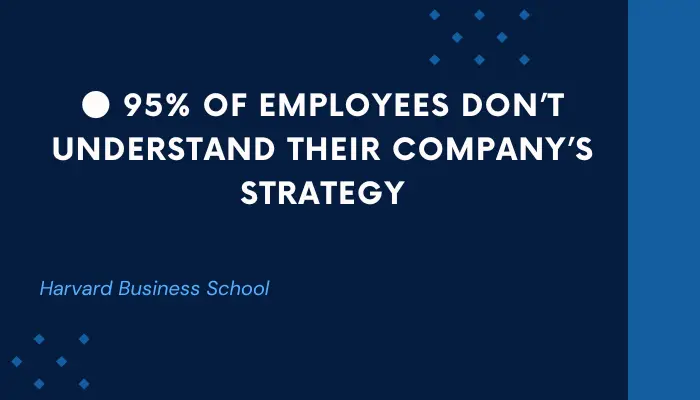Planning is a critical responsibility for management. Companies use specific techniques of planning in management to make effective plans because, without effective plans, businesses cannot succeed.
What are the techniques of planning in management?
The techniques of planning in management are the methods employees use to prepare or evaluate a plan. No one technique fits all scenarios, but a combination of techniques is required for effective planning. The five best planning techniques are:
- Forecasting
- SWOT analysis
- Scenario planning
- Benchmarking
- Contingency planning

These planning techniques mentioned above can help you make effective plans that are used to achieve organizational goals. Let’s discuss each planning technique in detail and understand its functioning.
💡 Helpful Statistics About Planning: ● Companies with written business plans grow 30% faster. ● Businesses with a plan are far more likely to get funding than those that don’t have a plan. ● 67% of well-formulated strategies failed due to poor execution. (HBR) ● 60–90% of strategic plans never fully launch. ● 48% of leaders spend less than a day on strategy each month. (HBS) ● 95% of employees don’t understand their company’s strategy. (HBR) ● 61% of executives feel they are not prepared for the strategic challenges. (HBR) ● 77% of successful companies translate their strategy into operational terms and evaluate it on a day-to- day basis. (Palladium)

Table of Contents
Explanation of techniques of planning in management
To explore the five best planning techniques, let’s first understand the core concept of planning techniques.
The techniques of planning in management are the methods employees use to prepare or evaluate a plan. Therefore, when managers or planners design a program, they apply multiple techniques to the program to reach a final plan.
There are different analytical techniques at their disposal that companies use to prepare an effective plan. Management wants a plan which incorporates market fluctuations, internal and external trends, and competitors’ threats. Moreover, it should also achieve the goals with minimum resources.
The management planning techniques help in deciding the course of action and assessing the effects of those actions on the business.
Five best planning techniques are discussed below:
Forecasting
In the planning process, management has to make predictions about future events before they actually occur. This prediction of future affairs is called forecasting.
Forecasting is a systematic process of calculating the probability of relevant future events. The estimation is based on the interpretation of past and present events. However, the predictions are not 100% correct, and there is a possibility of deviation from actual future events.
Thus, past and present data help to forecast because one cannot predict the future without knowing its past. Forecasting takes into account the current trends, past performances, and anticipated changes in behavior.
Long-term planning also involves forecasting political, social, and economic conditions. Organizations need to predict their business operations, personnel needed, the budget required, and other managerial operations.
Though managers have done their part in forecasting, they cannot relax completely. They must monitor and review the forecasts. Another critical point is to reduce the guesswork and use analytical tools and techniques for accurate forecasts.
Forecasting is a vital planning technique in management as no plan is prepared without anticipating future events. Therefore, you can consider forecasting the baseline of the planning process.
You can understand forecasting in simple five points:
- Predicts future events
- Devises the future course of action
- Based on past and present behaviors
- Valid to a certain extent
- Needs analytical and mathematical tools
SWOT analysis
SWOT is the abbreviation of strengths, weaknesses, opportunities, and threats. This analysis is a mechanism to analyze a company’s competitive positive. It examines internal and external factors and also determines current and future potential.
Strengths
The strengths of a company describe what that company is good at. It also describes what separates that organization from others? It could be anything like its product quality, low prices, customer service, strong brand, hefty exports, etc. A company should use its strengths to its benefit and exploit them to their fullest.
Weaknesses
Weaknesses are the company’s weak points that stop the organization from reaching its maximum potential. Hence, businesses need to improve those areas to be more successful. It can be high turnover, lack of resources, etc.
Strengths and weaknesses are the company’s inside factors, while opportunities and threats are external factors.
Opportunities
Opportunities are outside factors that a company can use for its benefit and make its operations better. A business should use its strengths to make use of opportunities.
For example, technological advancement, new potential markets, or subsidies from the government are some great opportunities.
Threats
Threats are those factors that can harm the productivity of a company. Anything capable of breaking a business is a threat. It can be a natural calamity, increased taxes, high competition, inflation, etc. They can also be referred to as obstacles that a business needs to overcome.
An organization should use this SWOT analysis in its planning process, so the business knows where it stands. Also, this analysis can help you move forward, taking advantage of the strengths and opportunities and reducing weaknesses and threats.
Scenario planning
Scenario planning is a mechanism in which different scenarios are built based on the projected forecasts. Then management decides how they would act if a particular scenario plays out in the future.
A set of two to five scenarios is a good number. It enables the professionals to think in advance about how they would react if the future unfolds a certain way. Hence, scenario planning helps make a plan adaptable to external and internal changes. Planning meetings are held to brainstorm and devise a plan.
Therefore, businesses should make scenarios that incorporate market changes, environmental events, supply-chain problems, shortage of capital, etc. So, when any such scenario plays out in the future, the company already has a plan to respond effectively and quickly.
Scenario planning helps avoid risk and creates more opportunities to tackle. You should make scenarios that are detailed enough to determine the success of the plan. You can understand scenario planning in the following simple steps:
- Brainstorm future scenarios
- Identify driving forces
- Develop a scenario
- Evaluate a scenario
- Make strategies accordingly
Benchmarking
Benchmarking is a procedure in which one company measures its success against similar companies. The products, services, and processes are estimated compared to the leading companies to determine any gap. Therefore, benchmarking identifies the performance gaps, which are reduced by improving our performance.
Benchmarking gives insight into how you can improve your processes or products. You can identify areas of improvement by setting the leading companies as a benchmark. You may need minor improvements or dramatic improvements depending on your performance.
If a company uses benchmarking as their planning technique, they have to figure out the leading company against which they will measure their performance. After setting the benchmark, set new and competitive goals. Goals have to be achievable; unrealistic goals demotivate the employees.
Once you set realistic goals, collect all the information about how your competitors execute processes. Then analyze the data and determine where your business is lacking. How can your business reach to competitor’s level? But remember, no company is perfect, so keep your mind open while analyzing data.
Take action to improve your performance and monitor and review the plan for successful execution.
Contingency planning
Contingency planning can also be referred to as plan B. We usually associate contingency planning with big disasters like earthquakes or floods. But contingency planning isn’t all about major crises; it also deals with common workplace problems—for example, loss of data, website server down, employee strike, etc.
As contingency planning deals with day to day problems of an organization, it is essential to make it a part of your every plan. For this purpose, you must conduct a risk assessment because every business poses a different risk.
First, you need to determine the most important procedures without which your company cannot operate—for example, your internet connection, your supply chain, and so on. Then determine the threats and the factors that can harm those important procedures—for example, technical failure, loss of staff, etc.
Once you have a list of threats, you need to figure out a contingency plan for those threats. It would be unwise to prepare a contingency plan for all hazards, so you got to prioritize. Contingency planning is a way to respond to risk.
A good contingency plan prevents your business from facing unexpected scenarios or threats. You can relate to the recent pandemic Covid-19. The companies with contingency plans could respond quickly to the pandemic and sort out other ways of working, like working from home. In contrast, others took more time to react to the situation.
Importance of techniques of planning in management
It is well-known that the planning process sets the goals for the business. Every business tries its best to attain those goals. The planning process makes the accomplishment of goals systematic and smooth. Therefore, to make planning process error-free, companies use different techniques mentioned above in their planning process.
Using these planning techniques, the company makes sure that it does not miss any aspect of risk, competition, environmental change, natural calamity, political instability, etc. For a plan to be effective, one has to consider all the internal, external, and global factors.
These techniques help the plan go smoothly and ensure performance improvement. The performance gaps are reduced, and employee productivity is increased. Some of the techniques help the organization understand themselves better for good, like SWOT analysis.
It is not pivotal to use all these techniques in one plan. Maybe one or two methods are sufficient in preparing a plan, depending on what you are planning about. Every method has its not pros and cons. Managers are capable of assessing which technique they should opt for effective planning.
Conclusion
In a nutshell, different planning techniques are used for preparing and evaluating a plan. If you are in a place where you need to plan for your business, you must know about them.
The techniques of planning in management are the methods employees use to prepare or evaluate a plan. No one technique fits all scenarios, but a combination of techniques is required for effective planning. The five best planning techniques are:
- Forecasting
- SWOT analysis
- Scenario planning
- Benchmarking
- Contingency planning
All these techniques lead to one result, which is achieving goals in the most effective way. Another thing is that planning techniques require systematic tools or mechanisms to function. It would help if you had analysis to predict the future, determine strengths, know the competitor’s processes, figure out scenarios, and determine risks.
However, without using planning techniques, it is impossible to prepare an effective plan that achieves goals. So, planning techniques are critical in the planning process.

